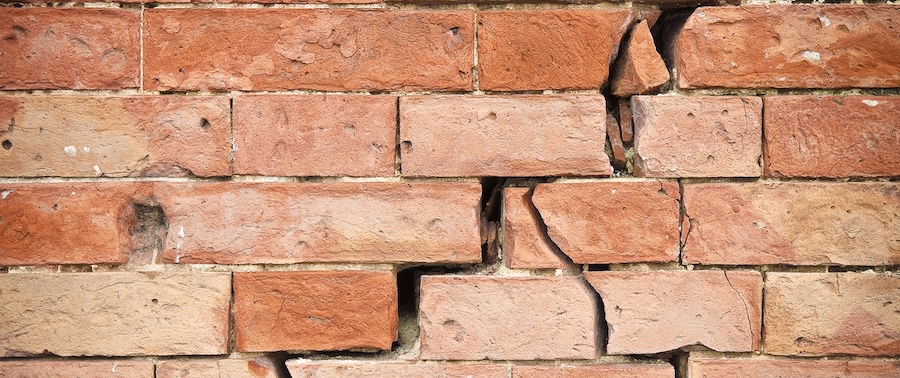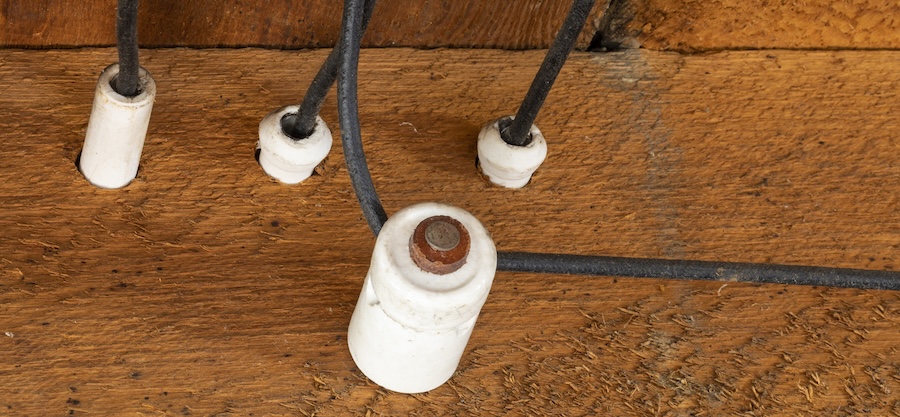You’re standing in front of a Colorado Springs home for sale that looks perfect online. The curb appeal is there. It’s got mountain views. The neighborhood is great.
But do you know what to look for during the tour that could save you from expensive surprises down the road? We have some home showing tips that’ll help you keep an eye out for potential red flags in the home you’re touring.
While most potential buyers focus on the floor plan and picture themselves living in the space during a house showing, there are a few specific things you should make sure to check for. In Colorado Springs, we’ve got challenges like expansive soils and hail damage that you won’t find in generic home-buying guides. A good home inspector will find and document many of these problems, but that will happen once you’re already far along in the process. It’s best to catch them early if you can.
This guide walks you through exactly what to look for during a Colorado home tour or open house. Think of this as your cheat sheet for knowing when to dig deeper and when something’s just normal wear and tear. House hunting can be fun, but it’s also your opportunity to look carefully for potential issues.
After you get a good look at the living room, kitchen, and other primary living spaces, check out the basement (if the home has one). Colorado Springs sits on expansive clay soils like bentonite clay that can expand up to 1.5 times their volume when wet. This is especially common in southwest Colorado Springs near the foothills. All houses here settle, but some signs can mean bigger problems.
What to look for:
Walk around and look at the walls. Tight hair line cracks in the face and at the corners signal normal settling. But if you see a crack in the foundation that is open at the top and tight at the bottom, or open at the bottom and tight at the top, horizontal cracks in basement walls that have resulted in deflection of the foundation wall, or stair-step patterns in brick? That’s worth investigating. Foundation repairs can be enormously expensive.
Check the interior walls and ceiling, particularly where walls meet ceilings throughout the house. Tight hair line cracks that are straight, on joint lines, or accessory lines are normal. Small gaps are normal, but a significant gap suggests movement. Try opening and closing interior doors. If they stick or won’t latch properly, the framing might have shifted.
Look at the garage floor and driveway. Major cracks running toward the house or sidewalks that have lifted or sunk relative to the foundation are signs of soil movement. If the driveway slopes toward the house instead of away, water’s been pooling where it shouldn’t.

Water damage in Colorado Springs comes with its own quirks. We get freeze-thaw cycles that can swing temperatures 29 degrees across freezing in 24 hours. Plus, our summer humidity drops below 20%, which makes materials expand and contract more than usual.
Start with your nose. A musty smell means moisture, and in our dry climate, that’s usually not good. Mold VOCs are gaseous byproducts released by mold as it grows and metabolizes organic matter, which you can recognize by a musty odor. Check ceilings for stains: fresh damage looks dark and might feel damp, while old damage shows as brown rings. Multiple rings indicate a problem that keeps coming back.
Look under every sink. Run your hand along the back wall feeling for dampness or soft spots. Check for warped cabinet bottoms or peeling laminate. White mineral deposits around pipes often mean slow leaks. If a water event happened around or in a cabinet and was not properly dried out, mold could be lurking under or behind the cabinet.
In the basement, walls should be bone dry. Any dampness is concerning. Look for white, chalky deposits on concrete walls. Some is normal in Colorado, but heavy deposits can mean water’s moving through the foundation.
To avoid excessive moisture at the foundation, check that gutters extend at least 4 feet from the foundation and the structure. Look at the grade: soil should slope away from the house. Poor drainage is a big deal here, especially in areas like Rockrimmon with steep lots.
Pop open that electrical panel. It takes 30 seconds and could save you thousands.
Big problems to spot:
Federal Pacific panels with red “Stab-Lok” breakers are a major issue because they can fail 60-80% of the time when tested. Zinsco, Challenger, and Pushmatic panels from the 1970s-80s have similar problems. Have your real estate agent take a look and give their opinion.
Look for rust, burn marks, or an electrical smell. Check if breakers click firmly into position. If you see multiple breakers tied together with wire or metal bars, someone’s been doing amateur electrical work.
Missing or handwritten labels suggest deferred maintenance. And if you spot cloth-insulated wiring anywhere in the house, that’s old stuff that needs to be replaced.

These are the things that make buying here different from other places.
Hail damage: Check south and west-facing roof slopes, aluminum siding, window screens, and AC units for dents. If you’re buying a condo or townhome, ask about the HOA’s insurance deductible. Some recent storms have led to special assessments over $20,000 per unit.
UV damage: At 6,000+ feet, we get 60% more UV exposure than sea level. South-facing windows, siding, and decks deteriorate faster. Faded window frames or cracked siding on newer homes is normal here but costs money to maintain.
Wildfire zones: If the property backs to open space in areas like Rockrimmon, Mountain Shadows, or Black Forest, check for defensible space and fire-resistant materials. Properties in evacuation zones need specific fire mitigation.
Permits: Look for permit stickers on the water heater and furnace. Lots of people don’t permit water heater replacements, which can be a massive safety issue and a problem during inspection. Permitting is required to ensure the work that has been done is both completed to industry standards and safe for the occupants of the property.
The house is only part of the equation. It’s a good idea to also look carefully at the neighborhood and surrounding area.
Drive by at different times: If it’s near a school, check it out at 7:30 AM and 3:00 PM to see if traffic backs up around the house. Same goes for homes near military bases.
Test your actual commute during rush hour. That convenient Powers Boulevard location might mean sitting in more traffic than you expected during the week.
HOA considerations: Ask for the HOA’s financial reserves and any pending assessments. Recent hail damage has led to massive special assessments in some communities. Also check what the HOA actually covers. Some handle all exterior maintenance, others very little.
Again, there’s no need to go into a house showing stressed out about catching every blemish and potential flaw. But while you’re checking out the kitchen, natural light, and bedroom sizes, it’s wise to also notice and document anything that seems off.
Take photos of anything concerning like panel labels, cracks, stains, permit stickers. You’ll want these later for reference. Before you take any photos, consult with your agent to make sure you have permission.
Ask questions: When was the roof replaced? Any insurance claims? Has the basement flooded? When was radon last tested? Your agent should help with these, or if it’s an open house you can see if the listing agent has any answers.
Not every issue is a deal-breaker. Here’s some perspective:
The goal is to understand what you’re getting into when potentially buying a home. Major foundation issues or extensive water damage might mean walking away, but most problems can be negotiated or budgeted for if you know about them upfront.
Every red flag you spot gives you information to make a smart decision. Maybe you negotiate the price down, maybe you ask for repairs, or maybe you decide this isn’t the house for you. That’s all okay.
Remember, this showing checklist isn’t a replacement for a professional inspection. But it helps you decide which houses deserve that deeper look and gives you a head start on understanding what you might be buying.
Ready to look at some houses with a real estate team who knows what to keep an eye out for? Get in touch today.
Looking for a great home inspector who can help you make sure your home is safe and in good condition? We love working with Justin Smith with Smith Property Specialists.
From detailed general home inspections and home warranty checks to specialized services like sewer scopes and radon testing, Justin can give you the information you need to make an informed decision.
Sailing Stone Real Estate is your home resource whether you’re a fresh-faced newbie to the home-buying scene, a seasoned pro with plenty of houses under your belt, or simply looking to offload that fixer-upper. We know buying or selling a home is a huge deal, which is why we’re here to help you through it no matter what comes our way.
Sailing Stone Agents will keep your buying or selling plans on course. Our seasoned pros have the expertise to steer you clear of financial disasters and guide you toward your real estate goals. Our TOP Priorities are Your Goals, Your Dreams, and Your Peace of Mind.
© Sailing Stone Real Estate. Website by Modernize My Site.